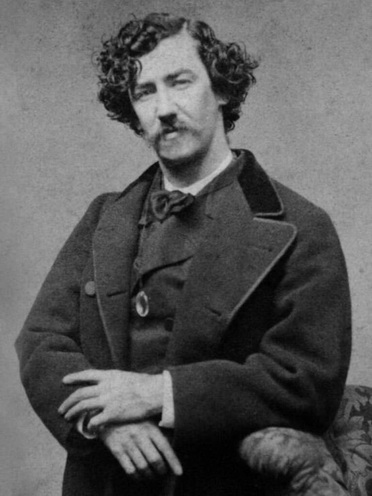 |
James McNeill Whistler | |
| Birth Date: July 11, 1834 |
||
| Death Date: July 17, 1903 Artist Gallery |
||
| James McNeill Whistler was best known for his innovative approach to art, where he focused on the aesthetic qualities of his work rather than the narrative. He is recognized for his portraiture, nocturnes, and a series of works that emphasized color harmony.
Born July 11, 1834, in Lowell, Massachusetts, to George Washington Whistler, a civil engineer, and Anna Matilda McNeill. His family moved to St. Petersburg, Russia, when he was nine, where his father worked on the construction of the Saint Petersburg–Moscow Railway. Whistler showed early talent in art, studying drawing at the Imperial Academy of Fine Arts in St. Petersburg. After his father's death, the family returned to the United States, where Whistler briefly attended the United States Military Academy at West Point, but was expelled due to poor academic performance.
In 1855, Whistler moved to Paris to study at the École Impériale, where he was influenced by the French Realists, particularly Gustave Courbet. Though Whistler's early work shows the influence of the French Realists, he gradually developed his own style that emphasized the importance of color, composition, and mood over narrative. He began titling his works in a manner similar to musical compositions, using terms like "symphonies," "arrangements," and "nocturnes" to emphasize the mood of his work. He also found inspiration in Japanese art, which was becoming popular in Europe during his time. In many of his works, he developed a technique where he used paint which was stroked onto the canvas in fast sweeps of the brush, similar to Japanese calligraphy. This technique allows the mood of the landscape to shine through, an innovative approach that marked a departure from traditional representational art.
Whistler was not only a skilled painter but also an accomplished printmaker, particularly in the realms of etching and lithography. His printmaking was characterized by his technical skill, innovative approaches, and the ability to capture atmosphere and mood with minimalistic precision. Whistler's first foray into printmaking began during his time at the U.S. Military Academy at West Point, where as a topographical draftsman he created his earliest etchings. However, his serious engagement with the medium started in the late 1850s when he moved to Paris. He studied the works of artists like Rembrandt, and was inspired by the etching revival taking place in France at the time. Later in London, where he continued to produce and exhibit his work, he created one of his most important etching series, “The Thames Set.” This was followed by two etching sets of Venice, where Whistler moved after being offered a commission, a welcome offer since he had recently declared bankruptcy and auctioned off all of his work.
In 1890 Whistler wrote "The Gentle Art of Making Enemies”, a book documenting his conflicts with critics and the art establishment. Despite these conflicts, however, and financial struggles, Whistler's work was increasingly recognized for its originality and contribution to modern art. He was awarded the Cross of the Légion d'honneur by the French government in 1892.
Whistler continued to work into his later years but slowed down due to health issues. He died on July 17, 1903, in London, at the age of 69. His legacy remains in his emphasis on "art for art's sake" and the concept of the artist as a creator of environments. His innovative approach to composition, color, and mood had a profound influence on the development of modern art, as his work bridged the gap between realism and abstraction and laid the groundwork for future movements such as Impressionism and Symbolism.
|
||


